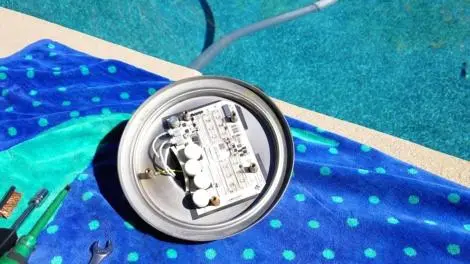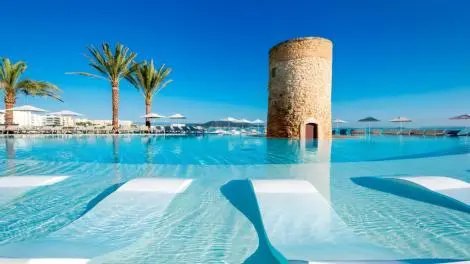Waterline tiling or pebble surfacing are two main ways to prevent grime from building up in your pool. These two styles make it easy to keep your pool clean and fresh all year.
What Is Waterline Tiling?
Waterline pool tiling can prevent your pool from becoming dingy and dirty around the sides. Around the waterline of your pool, you may notice a build-up of scum. This is often caused by sunscreen, dirt, and pollen. The build-up can be prevented by using waterline tiles. Place these around your waterline to make the edge of your pool much easier to clean.
Waterline tiling is often found on plaster pools, as it’s the plaster that scum usually builds upon. Other concrete pools are easier to clean and may not require waterline tiling.
Placement
The waterline tiling is usually around 15cm high to cover the waterline effectively. This is because the water will lap up and down against the pool’s edge rather than remain consistently at the same height.
Tile Materials
The two primary waterline tile materials are glass and porcelain. Glass tiles are a newer trend for swimming pools and pool renovations. They offer a stylish design while making it easy to wipe off any dirt. Glass reflects sunlight and can come in clear tiles or any desired pool water colour.
Porcelain is the more popular option for new pool waterline tiling. It’s been around longer and is durable and easy to clean. You can also find this in a large array of colours or even select one with a design on it to make your pool area stand out.
What is a Pebble Surface?
A pebble surface is made of stone pebbles mixed with cement placed on pool interiors. It needs to be put on right after the concrete has been placed on building the pool interior. It gets blasted on and then must be wiped down so that the top layer shows the pebbles rather than the concrete.
Benefits of A Pebble Surface
Pebble-surfaced pools are becoming increasingly popular due to their long lifespan and elegant look. This surface is non-porous, so it won’t absorb the chemicals you put into your swimming pool. It is also stain-resistant and won’t attract algae.
Design Options
If you decide to place a pebble surface on your swimming pool, you will have a few design choices to make. These pebbles can come in various colours, from light to dark. You could even get blue or sandy-coloured pebbles.
The size of the pebbles is another crucial factor. Large pebbles can be uncomfortable or painful on your feet, so the smaller, the better.
If you want a pool that won’t show dirt and grime, you can use waterline tiling on your plaster pool or a pebble surface for a concrete pool. These two great options will make cleaning your pool that much easier. Whether you plan to have a pool renovation or build your new dream pool, contact The Pool Co. now to find out more.



